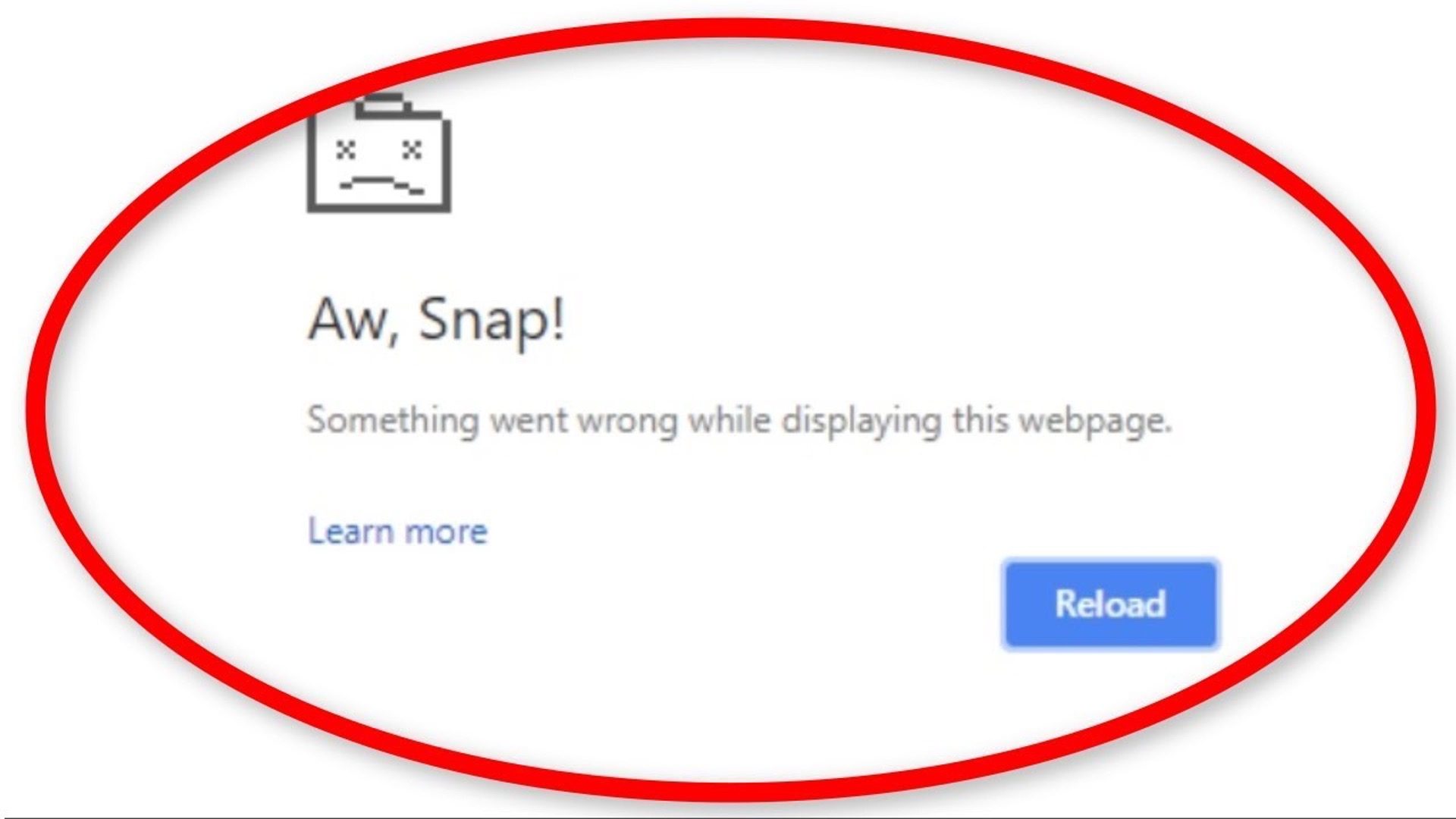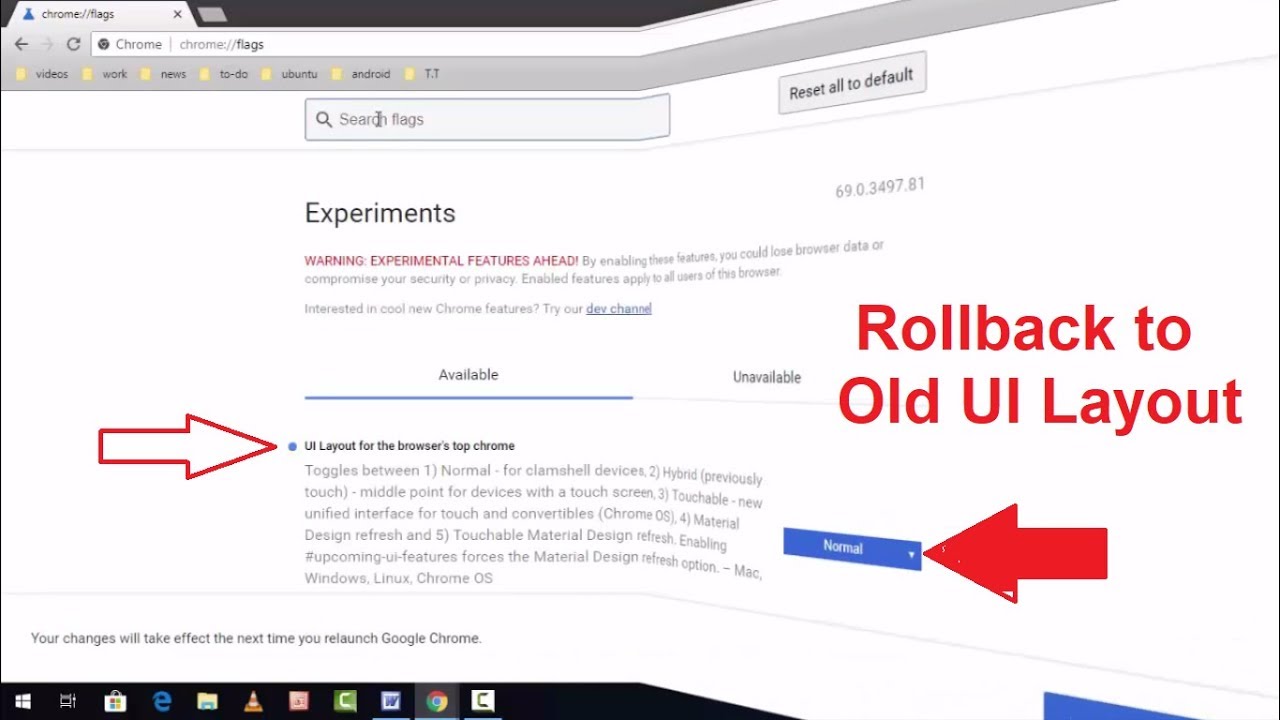Introduction
Have you ever encountered compatibility issues or experienced performance problems after updating your Chrome browser? If so, you may have wondered if it's possible to revert to an older version without the hassle of uninstalling the current one. Fortunately, downgrading Chrome to a previous version is indeed feasible, and in this guide, we'll walk you through the steps to achieve this seamlessly.
Whether you're a casual user or a tech-savvy individual, knowing how to downgrade Chrome can be a valuable skill. It allows you to troubleshoot issues that may arise from the latest updates, regain access to features that were removed in newer versions, or simply revert to a more stable browsing experience.
In the following sections, we'll delve into the step-by-step process of downgrading Chrome, ensuring that you can navigate this task with confidence. From checking your current Chrome version to installing an older release and disabling automatic updates, we'll cover everything you need to know to successfully downgrade Chrome without uninstalling it. So, let's embark on this journey to gain control over your Chrome version and optimize your browsing experience.
Step 1: Check current Chrome version
Before embarking on the process of downgrading Chrome, it's crucial to ascertain the current version installed on your system. This step ensures that you select the appropriate older version for the downgrade process.
To check the current Chrome version, follow these simple steps:
-
Open Chrome Browser: Launch the Chrome browser on your computer by clicking on its icon in the taskbar or desktop.
-
Access the Menu: In the top-right corner of the browser window, locate and click on the three vertically aligned dots, also known as the "Menu" icon.
-
Navigate to Settings: From the dropdown menu, hover over "Help" and then select "About Google Chrome." This action will open a new tab displaying information about the current version of Chrome.
-
Check the Version: On the "About Chrome" page, the current version of Chrome will be displayed. It will automatically check for updates and display the current version number. This number typically consists of three sets of numbers separated by periods, such as "91.0.4472.124."
By following these steps, you can easily determine the current version of Chrome installed on your system. This information is crucial for the subsequent steps in the downgrade process, as it ensures that you download the precise older version that aligns with your system's requirements.
Understanding your current Chrome version empowers you to make informed decisions when selecting the appropriate older version for the downgrade process. With this knowledge in hand, you are now ready to proceed to the next step of downloading the specific older version of Chrome that you wish to install.
By taking the time to check your current Chrome version, you are setting the stage for a smooth and successful downgrade process, ultimately enabling you to regain control over your browsing experience.
Step 2: Download older version of Chrome
Now that you have identified the current version of Chrome installed on your system, the next step is to download the specific older version that you intend to install. This process involves obtaining the installation file for the desired Chrome version from a reliable source. Here's a detailed guide on how to download an older version of Chrome:
-
Identify the Desired Version: Before proceeding with the download, it's essential to determine the exact version of Chrome that you wish to install. This decision may be influenced by factors such as compatibility with certain extensions or the presence of features that were altered or removed in newer releases. Once you have identified the specific version, proceed to the next step.
-
Visit a Trusted Source: To ensure the authenticity and integrity of the older Chrome version, it's advisable to obtain it from a reputable source. The official Chrome release archive, hosted by websites such as FileHippo or OldVersion.com, is a reliable repository for accessing previous versions of the browser. Navigate to the website and locate the section dedicated to Chrome releases.
-
Select the Version: Within the archive, locate the version of Chrome that corresponds to your requirements. The versions are typically listed chronologically, allowing you to browse through the release history. Once you have identified the desired version, click on it to initiate the download process.
-
Download the Installation File: Upon selecting the specific version, you will be directed to a page where you can download the installation file. Ensure that you are downloading the correct version by verifying the version number and release date. Click on the download link to save the installation file to a location on your computer that is easily accessible.
-
Verify the Integrity: After the download is complete, it's advisable to verify the integrity of the downloaded file to ensure that it has not been tampered with. You can use checksum verification tools or antivirus software to confirm the authenticity of the downloaded installation file.
By following these steps, you can successfully download the older version of Chrome that aligns with your preferences and requirements. This meticulous approach ensures that you obtain the precise version needed for the subsequent steps of the downgrade process. With the installation file securely saved on your system, you are now ready to proceed to the next step of uninstalling the current version of Chrome.
Taking the time to download the specific older version of Chrome sets the stage for a seamless downgrade process, allowing you to regain control over your browsing experience and address any compatibility or performance concerns associated with the current version.
Step 3: Uninstall current Chrome version
Uninstalling the current version of Chrome is a critical step in the process of downgrading to an older release. By removing the existing installation, you create a clean slate for the installation of the older version, ensuring a seamless transition without any conflicts or remnants from the previous iteration. Here's a detailed guide on how to uninstall the current Chrome version from your system:
-
Open Control Panel: Access the Control Panel on your Windows system by clicking on the Start button and typing "Control Panel" in the search bar. Select Control Panel from the search results to open the application.
-
Navigate to Programs and Features: Within the Control Panel, locate and click on the "Programs" category, which will display a list of options. Select "Uninstall a program" to access the list of installed applications on your system.
-
Locate Google Chrome: Scroll through the list of installed programs to find Google Chrome. Once located, right-click on Google Chrome and select "Uninstall" from the context menu. Alternatively, you can click on Google Chrome and then select the "Uninstall" option from the menu bar.
-
Follow the Uninstall Wizard: Upon initiating the uninstallation process, a confirmation dialog may appear, prompting you to confirm your decision to uninstall Chrome. Follow the on-screen instructions provided by the uninstall wizard to proceed with the removal of the current Chrome version.
-
Clear Remaining Data (Optional): After the uninstallation is complete, you may choose to clear any remaining data associated with the previous Chrome installation. This step involves deleting residual files and folders related to Chrome, such as user data and configuration settings. While this step is optional, it can contribute to a cleaner reinstallation of the older Chrome version.
-
Restart Your System: Once the uninstallation process is finalized, it's advisable to restart your system to ensure that any lingering processes or dependencies related to the previous Chrome installation are cleared from memory.
By following these steps, you can effectively uninstall the current version of Chrome from your system, paving the way for the subsequent installation of the older release. This meticulous approach ensures that you can proceed with the downgrade process without encountering conflicts or remnants from the previous Chrome version. With the current version successfully uninstalled, you are now prepared to proceed to the next step of installing the older version of Chrome.
Uninstalling the current Chrome version is a pivotal stage in the downgrade process, enabling you to create a clean environment for the installation of the desired older release. This proactive approach sets the stage for a successful transition to the older Chrome version, allowing you to regain control over your browsing experience and address any compatibility or performance concerns associated with the current iteration.
Step 4: Install older version of Chrome
With the current version of Chrome uninstalled, you are now ready to proceed with the installation of the older version that you downloaded in the previous step. Installing an older version of Chrome involves a straightforward process, allowing you to seamlessly transition to the desired release. Here's a detailed guide on how to install the older version of Chrome on your system:
-
Locate the Downloaded Installation File: Begin by locating the installation file of the older Chrome version that you downloaded in the previous step. This file is typically saved in the default download location specified by your web browser, such as the "Downloads" folder. If you chose a custom location for the download, navigate to that location to access the installation file.
-
Initiate the Installation Process: Double-click on the downloaded installation file to initiate the installation process. This action will launch the Chrome setup wizard, which guides you through the steps required to install the older version of Chrome on your system.
-
Follow the Setup Wizard: The setup wizard will prompt you to confirm your intent to install the older version of Chrome. Follow the on-screen instructions provided by the wizard, such as accepting the terms of service and selecting the installation directory. Ensure that you review and adjust any installation settings according to your preferences.
-
Complete the Installation: Once you have confirmed the installation settings, proceed with the installation process by clicking on the "Install" or "Next" button, depending on the prompts displayed by the setup wizard. The installation progress will be indicated, and you may be required to wait for the process to complete.
-
Launch the Older Version: After the installation is finalized, you can launch the older version of Chrome by double-clicking on its desktop shortcut or accessing it from the Start menu. Upon launching the older version, take a moment to verify that it corresponds to the specific release that you intended to install.
By following these steps, you can successfully install the older version of Chrome on your system, allowing you to transition from the uninstalled current version to the desired release. This meticulous approach ensures that you can seamlessly integrate the older Chrome version into your browsing environment, enabling you to address any compatibility or performance concerns associated with the previous iteration.
Installing the older version of Chrome marks a pivotal stage in the downgrade process, empowering you to regain control over your browsing experience and leverage the features and stability offered by the specific release. With the older version now installed, you are prepared to proceed to the final step of disabling automatic updates to prevent unexpected upgrades to newer versions.
Step 5: Disable automatic updates
Disabling automatic updates for Chrome is a crucial step in maintaining the specific older version that you have intentionally installed. By preventing automatic updates, you ensure that your browser remains at the desired version without being automatically upgraded to the latest release. This proactive measure allows you to retain control over the software version and avoid unexpected changes that may impact your browsing experience. Here's a detailed guide on how to disable automatic updates for Chrome:
-
Access Chrome Settings: Open the Chrome browser and click on the three vertically aligned dots in the top-right corner to access the menu. From the dropdown menu, select "Settings" to navigate to the browser's settings page.
-
Navigate to the Update Section: Within the Settings page, scroll down and click on "Advanced" to reveal additional settings. Under the "Advanced" section, locate and click on "System" to access the update-related settings for Chrome.
-
Disable Automatic Updates: In the "System" settings, you will find the option to manage Chrome updates. Toggle off the switch next to "Continue running background apps when Google Chrome is closed" to disable automatic updates. This action prevents Chrome from running background processes that facilitate automatic updates.
-
Verify Update Settings: After disabling automatic updates, it's advisable to verify the update settings to ensure that the changes have been applied. You can do this by navigating to the "About Chrome" page, as mentioned in the earlier steps, and confirming that the browser no longer checks for or installs updates automatically.
-
Monitor Update Status: While automatic updates are disabled, it's essential to periodically monitor the update status of Chrome to stay informed about new releases and security patches. You can manually check for updates by accessing the "About Chrome" page and initiating the update process if necessary.
By following these steps, you can effectively disable automatic updates for Chrome, ensuring that the specific older version remains intact without being automatically upgraded. This proactive approach empowers you to maintain control over the browser version, enabling you to leverage the features and stability offered by the chosen release.
Disabling automatic updates for Chrome is a strategic measure that aligns with the goal of downgrading to an older version. By implementing this step, you can safeguard the stability and functionality of the specific release, ultimately optimizing your browsing experience according to your preferences and requirements.
Conclusion
In conclusion, the process of downgrading Chrome to an older version without uninstalling it is a valuable skill that empowers users to maintain control over their browsing experience. By following the step-by-step guide outlined in this article, you can seamlessly navigate the transition from the current version to a specific older release, addressing compatibility issues, performance concerns, or the need to access features that may have been altered or removed in newer iterations.
The journey begins with checking the current Chrome version, a fundamental step that ensures you select the appropriate older version for the downgrade process. This proactive approach sets the stage for a smooth transition, allowing you to make informed decisions when selecting the precise older version that aligns with your system's requirements.
Downloading the older version from a trusted source is the next crucial step, ensuring that you obtain the authentic installation file without compromising the integrity of your system. By carefully selecting the desired version and verifying its authenticity, you lay the foundation for a successful downgrade process.
Uninstalling the current Chrome version is a pivotal stage that creates a clean environment for the installation of the older release. By removing the existing installation, you mitigate the risk of conflicts or remnants from the previous iteration, setting the stage for a seamless transition to the desired older version.
The subsequent installation of the older version marks a significant milestone, allowing you to seamlessly integrate the specific release into your browsing environment. This step empowers you to regain control over your browsing experience, leveraging the features and stability offered by the chosen version.
Finally, disabling automatic updates for Chrome is a strategic measure that safeguards the stability and functionality of the specific older release. By preventing automatic upgrades, you maintain control over the browser version, ensuring that it remains aligned with your preferences and requirements.
In essence, the ability to downgrade Chrome without uninstalling it grants users the flexibility to tailor their browsing experience according to their specific needs. Whether it's addressing compatibility concerns, reverting to a more stable release, or accessing features exclusive to older versions, this process empowers users to take charge of their Chrome version, ultimately optimizing their browsing experience.

























